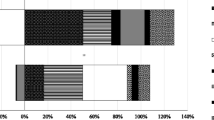Abstract
In terms of less access to private sources of care (as distinguished from hospital-public clinics) and longer travel time to usual source of care, poverty areas are at a disadvantage. Within the ten areas studied, the poor have less access than the nonpoor, with access differences even greater between the races than between income groups. Blacks generally have less access than whites when income differences are taken into account. Both the type of usual source of care and travel time appear to be related to differential utilizations of ambulatory care resources: persons reporting private sources of care and persons with shorter travel time to their usual source of care tend to make more physician visits in a year. Mechanisms for public financing of health care will not likely alleviate the problems of inaccessibility presented by poverty areas. It is in these areas of low access that public responsibility to organize and locate facilities will continue even after the advent of a fairly comprehensive payment mechanism for health care among the poor.
Similar content being viewed by others
References
Andersen R:A Behavioral Model of Families' Use of Health Services. Research Series No. A25, Center for Health Administration Studies. Chicago, University of Chicago Press, 1968.
Bice TW, Eichhorn RL, Fox PD: Socioeconomic status and use of physician services: A reconsideration.Med Care 10:261–271, 1972.
Sparer G, Okada LM: Chronic conditions and physician use patterns in ten urban poverty areas.Med Care 12:549–560, 1974.
Richardson WC: Measuring the urban poor's use of physician services in response to illness episodes.Med Care 8:132–142, 1970.
Andersen R, Greeley RM, Kravits J, et al:Health Service Use, National Trends and Variations. DHEW Publication No. (HSM) 73-3004, October 1972. P 3.
National Center for Health Statistics: Physician visits, volume and interval since last visit, United States, 1969.Vital Health Stat Series 10, No. 75, 1971. Table 12.
Action JP:Demand for Health Care among the Urban Poor, with Special Emphasis on the Role of Time. The New York City Rand Institute, R-1151-OEO/NYC, April 1973.
Fox PD: Access to medical care for the poor: The federal perspective.Med Care 10:282–277, 1972.
Additional information
Ms. Okada is Statistician and Mr. Sparer is Acting Director, Division of Health Services Evaluation, National Center for Health Services Research, Health Resources Administration, Department of Health, Education, and Welfare, Parklawn Building, Rockville, Maryland 20852.
Rights and permissions
About this article
Cite this article
Okada, L.M., Sparer, G. Access to usual source of care by race and income in ten urban areas. J Community Health 1, 163–174 (1976). https://doi.org/10.1007/BF01323107
Issue Date:
DOI: https://doi.org/10.1007/BF01323107




